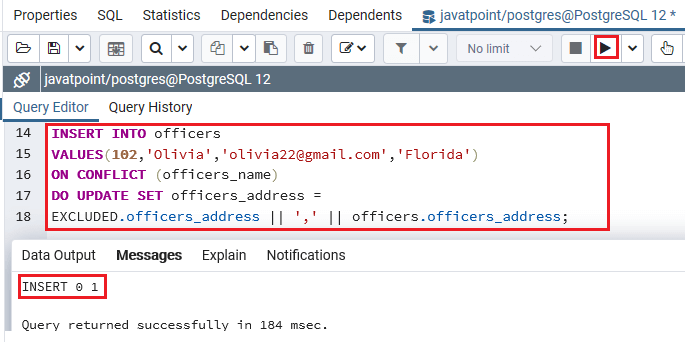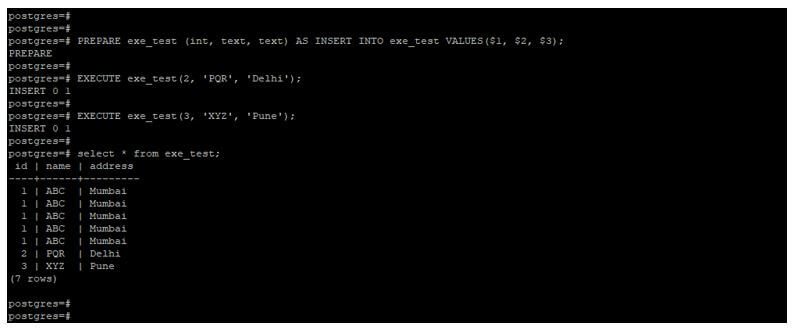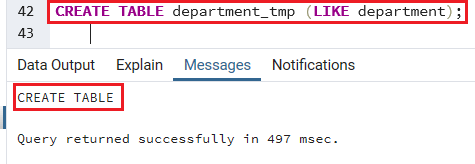

The WITH clause allows you to specify one or more subqueries that can be referenced by name in the INSERT query. If you use the query clause to insert rows from a query, you of course need to have SELECT privilege on any table or column used in the query. Use of the RETURNING clause requires SELECT privilege on all columns mentioned in RETURNING. If a column list is specified, you only need INSERT privilege on the listed columns. You must have INSERT privilege on a table in order to insert into it. The syntax of the RETURNING list is identical to that of the output list of SELECT. However, any expression using the table's columns is allowed.
INSERT INTO FROM SELECT POSTGRES SERIAL
This is primarily useful for obtaining values that were supplied by defaults, such as a serial sequence number. The optional RETURNING clause causes INSERT to compute and return value(s) based on each row actually inserted. If the expression for any column is not of the correct data type, automatic type conversion will be attempted. The values supplied by the VALUES clause or query are associated with the explicit or implicit column list left-to-right.Įach column not present in the explicit or implicit column list will be filled with a default value, either its declared default value or null if there is none. If no list of column names is given at all, the default is all the columns of the table in their declared order or the first N column names, if there are only N columns supplied by the VALUES clause or query. The target column names can be listed in any order. One can insert one or more rows specified by value expressions, or zero or more rows resulting from a query. For example, the following tries to insert a date value in the gender column and so it will return an error.INSERT inserts new rows into a table. You must specify values for the column in the order of columns defined in the table, otherwise, it will result in wrong data insertion or an error. The above statement inserted a single row, so it will return INSERT 0 1. The count is the number of rows inserted to the table. In the INSERT oid count, the oid is an object identifier which will always be 0 for the INSERT statement. No need to specify a value for that column in the INSERT statement.Įxecuting the above query in pgAdmin will display the following result:Įxecuting the INSERT INTO statement will return INSERT oid count as a result along with the query execution status like "Query returned successfully in 52 msec." in pgAdmin. If the table has a SERIAL column, Postgres will automatically generate a sequence number for the serial column. To insert a date value to the column with DATE datatype, need to specify the date in ‘YYYY-MM-DD' format. To insert character or string data, it needs to be enclosed in single quotes 'value'. If you do not specify the optional column (NULL column) then the INSERT statement will add NULL or DEFAULT value (if specified) in the table. If you do not specify the required column (NOT NULL column) in the INSERT statement, Postgres will raise an error.


Column values are specified in the VALUES clause. The above INSERT statement will insert data into all the columns of the employee table.


 0 kommentar(er)
0 kommentar(er)
